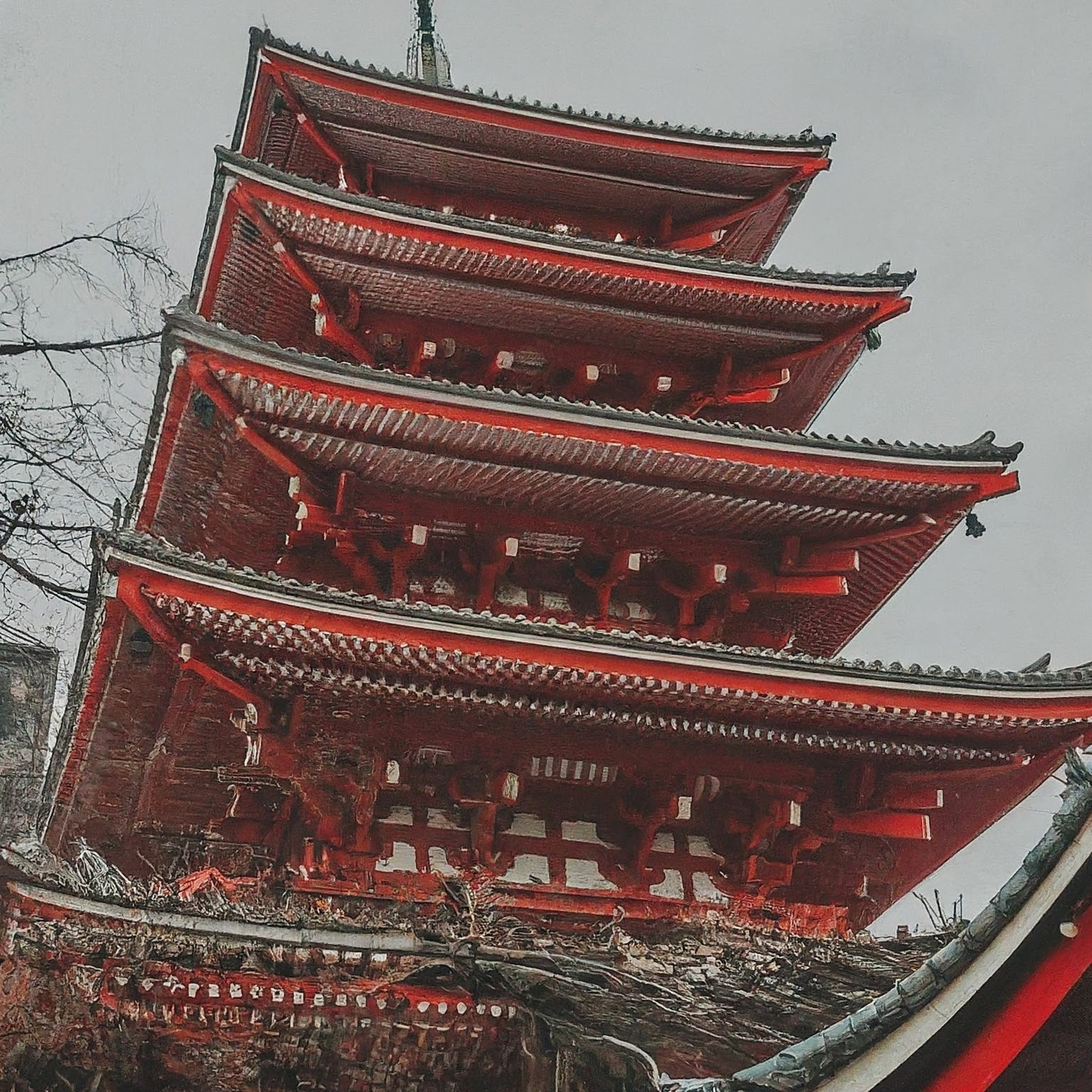I. Introduction
Tokyo, the bustling capital of Japan, is a city where the ancient and the ultramodern coexist in perfect harmony. With its towering skyscrapers, historic temples, and tranquil gardens, Tokyo offers a unique blend of experiences that cater to every type of traveler. Whether you’re a history enthusiast, a fashion lover, or someone seeking to immerse yourself in the local culture, Tokyo has something special to offer.
In this guide, we will take you on a three-day journey through Tokyo, showcasing the best of what this vibrant metropolis has to offer. From exploring the rich traditions of old Tokyo to diving into the electrifying energy of its modern districts, and finally, experiencing the serene beauty of its cultural and natural sites, each day promises unforgettable memories.
Join us as we embark on an adventure to uncover the essence of Tokyo, with carefully curated itineraries that ensure you make the most of your visit. Whether it’s your first time in the city or you’re returning for another taste of its magic, these three perfect days in Tokyo will leave you captivated and longing for more.
II. Day 1: Exploring Traditional Tokyo
Tokyo is a city where the ancient and the modern coexist in perfect harmony. On your first day, immerse yourself in the rich cultural heritage of Traditional Tokyo. This day will transport you back in time, offering a glimpse into the city’s storied past.
A. Morning: Visit Senso-ji Temple
Begin your journey with a visit to Senso-ji Temple, Tokyo’s oldest and most significant Buddhist temple. Located in the Asakusa district, Senso-ji is a spiritual and cultural landmark that attracts millions of visitors each year. As you approach the temple, you’ll walk through the Kaminarimon (Thunder Gate), an iconic symbol of Asakusa, adorned with a giant red lantern.
Stroll along Nakamise Street, a bustling shopping avenue leading up to the temple. This street is lined with traditional shops and stalls selling everything from souvenirs and snacks to handcrafted goods. As you wander through Nakamise, be sure to sample local treats like freshly made ningyo-yaki (small, doll-shaped sponge cakes filled with sweet red bean paste).
Upon reaching the temple grounds, take a moment to cleanse yourself at the purification fountain before entering the main hall. Inside, you can offer prayers, light incense, and admire the stunning architecture and intricate details of this sacred site. Don’t miss the Asakusa Shrine, located just a short walk from the main temple, which adds another layer of historical significance to your visit.
B. Afternoon: Stroll through Asakusa
After your spiritual morning, continue exploring the charming neighborhood of Asakusa. This area retains a nostalgic atmosphere, with narrow streets, traditional shops, and rickshaws offering guided tours. Wander through the lively streets and soak in the ambiance of old Tokyo.
For lunch, consider dining at one of the many local eateries serving traditional Japanese cuisine. Try a bowl of tempura-don (tempura on rice) or a plate of sushi from a nearby sushi-ya (sushi shop). The Asakusa district is also known for its street food, so don’t hesitate to sample takoyaki (octopus balls) or taiyaki (fish-shaped cakes filled with sweet red bean or custard).
In the afternoon, visit the Asakusa Culture and Tourist Information Center, where you can get panoramic views of the neighborhood from the observation deck. This is a perfect spot for capturing stunning photographs of the area, including the Skytree Tower in the distance.
C. Evening: Experience a Traditional Tea Ceremony
As the day draws to a close, immerse yourself in one of Japan’s most revered cultural practices: the traditional tea ceremony. Head to a local teahouse where you can participate in a chaji, a full-length tea ceremony that is both a spiritual and aesthetic experience. The ceremony is a harmonious blend of hospitality, art, and Zen philosophy.
Dressed in a kimono, your host will guide you through the meticulous process of preparing and serving matcha (powdered green tea). Every movement is deliberate, embodying the principles of harmony, respect, purity, and tranquility. As you sip the frothy, jade-green tea, take a moment to appreciate the serene surroundings and the centuries-old tradition you are partaking in.
By the end of your first day, you’ll have experienced a rich tapestry of Tokyo’s traditional culture, from its historic temples and nostalgic streets to its deeply ingrained customs. Tomorrow, prepare to dive into the vibrant and modern side of this multifaceted city.
III. Day 2: Modern Tokyo Adventures
Tokyo is a city that seamlessly blends the ultramodern with the traditional, and Day 2 of your adventure will immerse you in the bustling, contemporary side of this vibrant metropolis.
A. Morning: Explore Shibuya Crossing and Hachiko Statue
Start your day at one of Tokyo’s most iconic spots: Shibuya Crossing. Often dubbed the busiest pedestrian crossing in the world, this intersection is a symphony of organized chaos. As the traffic lights turn red in every direction, hundreds of people surge into the street, creating a mesmerizing spectacle of human movement. Whether you’re in the thick of the crowd or watching from the second-floor Starbucks that overlooks the crossing, this experience is a quintessential Tokyo moment.
Just a stone’s throw away from Shibuya Crossing is the Hachiko Statue, a touching tribute to Tokyo’s most loyal dog. Hachiko, an Akita, waited at Shibuya Station every day for nearly 10 years after his owner’s death, a story that has captured the hearts of many. The statue is not only a popular photo spot but also a poignant reminder of loyalty and love. Spend a moment here to soak in the history and sentiment before moving on to your next adventure.
B. Afternoon: Shopping in Harajuku
After the frenetic energy of Shibuya, take a short walk or a quick train ride to Harajuku, a neighborhood that epitomizes Tokyo’s youthful and eclectic spirit. Begin your Harajuku experience on Takeshita Street, a bustling pedestrian avenue lined with quirky boutiques, trendy clothing stores, and an array of unique eateries. From the latest in Japanese street fashion to whimsical accessories, shopping here is both an adventure and a visual feast.
No trip to Harajuku would be complete without indulging in some local treats. Try the famous crepes, filled with everything from fresh fruits and whipped cream to savory ingredients like ham and cheese. Alternatively, sample the colorful and Instagram-worthy cotton candy or the quirky “rainbow cheese toast.”
After exploring Takeshita Street, venture to the nearby Omotesando, often referred to as Tokyo’s Champs-Élysées. This tree-lined avenue is home to high-end boutiques, modern architecture, and sophisticated cafes. Whether you’re window shopping or splurging on luxury items, Omotesando offers a more refined contrast to the youthful exuberance of Takeshita Street.
C. Evening: Neon Lights and Nightlife in Shinjuku
As the day transitions to night, make your way to Shinjuku, a district that truly comes alive after dark. Shinjuku is famous for its neon lights, towering skyscrapers, and vibrant nightlife. Start your evening with a visit to Omoide Yokocho, also known as “Memory Lane” or “Piss Alley.” This narrow alleyway is lined with tiny eateries and izakayas (Japanese pubs) offering everything from yakitori (grilled chicken skewers) to ramen. The rustic charm and convivial atmosphere make it a great place to enjoy a casual meal and a drink.
For a more futuristic experience, head to the Robot Restaurant in Kabukicho, Shinjuku’s entertainment and red-light district. This over-the-top dinner show features flashy robots, dazzling lights, and energetic performances. It’s a spectacle that has to be seen to be believed and encapsulates Tokyo’s penchant for the bizarre and the extraordinary.
Finally, end your night with a panoramic view of the city from the Tokyo Metropolitan Government Building’s observation deck. The observation deck is open late and offers stunning, free views of Tokyo’s sprawling cityscape, glittering under the night sky. It’s the perfect way to conclude your day of modern Tokyo adventures, leaving you with memories of a city that never ceases to amaze.
IV. Day 3: Cultural and Natural Wonders
Your third day in Tokyo promises a harmonious blend of cultural enrichment and natural beauty, offering a serene yet stimulating adventure that captures the essence of Japan’s timeless traditions and lush landscapes.
A. Morning: Visit the Meiji Shrine
Start your day with a visit to the Meiji Shrine, one of Tokyo’s most important Shinto shrines. Nestled in a dense forested area, this shrine is dedicated to Emperor Meiji and Empress Shoken. As you walk through the grand Torii gate, you’ll feel a sense of tranquility enveloping you, far removed from the city’s hustle and bustle.
The shrine complex is vast, featuring beautiful wooden structures and a serene garden. Take a leisurely stroll along the gravel paths, where you might spot a traditional wedding procession or locals offering prayers. Don’t miss the large collection of sake barrels on display, donated by breweries across Japan in honor of the deities.
For a deeper understanding of Shinto traditions, participate in a purification ritual at the temizuya (water pavilion) before entering the main shrine. The experience is both enlightening and spiritually refreshing, offering a unique glimpse into Japan’s rich religious heritage.
B. Afternoon: Relax in Yoyogi Park
After your spiritual morning, head to nearby Yoyogi Park for a delightful afternoon of relaxation. This expansive park, located just a stone’s throw from the Meiji Shrine, is one of Tokyo’s greenest spaces, offering a perfect retreat from urban life.
Spread out a picnic blanket under the shade of cherry trees and enjoy a leisurely lunch. If you visit during spring, the park is a prime spot for hanami (cherry blossom viewing), with trees in full bloom creating a picturesque landscape. In autumn, the park transforms into a canvas of vibrant reds and yellows, providing equally stunning views.
Yoyogi Park is also a hub of activity, especially on weekends. You might encounter street performers, musicians, and even groups practicing traditional Japanese martial arts. Rent a bicycle or simply wander through the various sections of the park, including the tranquil Japanese garden and the vibrant bird sanctuary, to fully appreciate its natural beauty and lively atmosphere.
C. Evening: Enjoy a Sumo Wrestling Match
As evening approaches, prepare for an exhilarating experience by attending a sumo wrestling match, an iconic Japanese sport with centuries-old traditions. Sumo matches are held at the Ryogoku Kokugikan, Tokyo’s premier sumo stadium. Check the schedule in advance, as tournaments are held six times a year, each lasting 15 days.
Witnessing a sumo match is a spectacle like no other, with its combination of ritualistic ceremonies and intense physical combat. The atmosphere is electric, with fans cheering as the wrestlers, or rikishi, engage in fierce bouts. Before the matches begin, observe the dohyo-iri, a ceremonial ring-entering ritual that showcases the wrestlers’ elaborate attire and the sport’s deep-rooted traditions.
If a live match isn’t available during your visit, consider exploring the Sumo Museum adjacent to the stadium. The museum offers fascinating exhibits on the history of sumo, including antique woodblock prints, ceremonial aprons, and other artifacts that provide insight into this quintessentially Japanese sport.
As your perfect three days in Tokyo draw to a close, you’ll find yourself enriched by the city’s seamless blend of the ancient and the modern, the spiritual and the secular. Tokyo’s diverse offerings ensure that every moment is filled with wonder, leaving you with memories to cherish for a lifetime.
V. Conclusion
Tokyo, a city where the past and future seamlessly intertwine, offers an unparalleled experience for any traveler. Over the course of three meticulously planned days, you can immerse yourself in the rich tapestry of traditions, modern marvels, and cultural treasures that define this vibrant metropolis.
On your first day, the journey through traditional Tokyo allows you to step back in time. Starting with the serene Senso-ji Temple, you can soak in the spiritual atmosphere and marvel at the historic architecture. A leisurely stroll through Asakusa offers a glimpse into the Edo period, with its charming shops and street food stalls. As the day transitions into evening, participating in a traditional tea ceremony provides a moment of tranquility and cultural immersion, offering a deep connection to Japanese customs.
The second day catapults you into the pulsating heart of modern Tokyo. The iconic Shibuya Crossing, with its mesmerizing sea of people, and the endearing Hachiko Statue set the tone for a day filled with contemporary wonders. Harajuku’s vibrant streets and eclectic shops invite you to indulge in unique fashion and quirky finds. As night falls, Shinjuku’s dazzling neon lights and bustling nightlife scene offer endless entertainment, from karaoke bars to towering skyscrapers.
Your final day in Tokyo is a celebration of both cultural heritage and natural beauty. The majestic Meiji Shrine, nestled within a lush forest, serves as a peaceful retreat and a testament to Japan’s Shinto traditions. Yoyogi Park, with its expansive green spaces, provides a perfect spot to unwind and reflect on your journey. The excitement of a sumo wrestling match in the evening brings a thrilling conclusion to your Tokyo adventure, showcasing the strength and skill of Japan’s ancient sport.
In just three days, you can experience the multifaceted allure of Tokyo—its reverence for the past, its embrace of the present, and its vision for the future. Whether you are captivated by historical landmarks, modern attractions, or the harmonious blend of culture and nature, Tokyo promises an unforgettable adventure that will leave you yearning for more.
Catch up on the top stories and travel deals by subscribing to our newsletter!












Leave a Reply